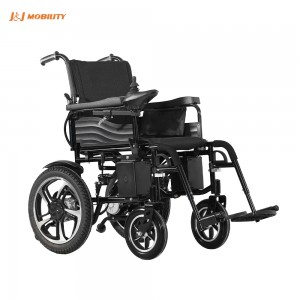How to Select the Right Electric Wheelchair for Seniors
As our loved ones age, mobility can become a challenge, affecting their ability to travel easily and enjoy daily activities. Investing in a suitable electric wheelchair can greatly enhance their quality of life, but with so many models available, making the right choice can be difficult. Here’s a guide to help you navigate this decision.
Who Should Avoid Using an Electric Wheelchair?
It’s important to note that electric wheelchairs aren’t suitable for everyone. Since they require the use of a controller located on the armrest, elderly individuals who struggle with hand dexterity or have cognitive impairments may find these devices unsafe or challenging to operate.
Key Considerations When Choosing an Electric Wheelchair
When selecting an electric wheelchair, several critical factors should be examined:
1. Core Features
The motor, battery, controller, and braking system form the foundation of a reliable electric wheelchair. Here’s why these components are crucial:
Motor: An efficient motor enhances the wheelchair’s overall performance, making it easier to climb inclines, offering a smoother start, reducing noise, and providing better shock absorption.
Battery: Ternary lithium batteries are a popular choice, known for being lightweight, long-lasting, and eco-friendly.
Controller: A quality controller ensures a smooth experience. When the user operates the joystick, the wheelchair should start and stop gently, providing a sense of safety and stability.
Braking System: Safety comes first, and an advanced braking system like an electromagnetic brake can automatically engage when the joystick is released, ensuring accurate and secure stopping.
2. Maximum Load Capacity
Most electric wheelchairs support a weight of up to 120 kg, though some models are built to accommodate up to 180 kg. With a wide range of options, even individuals with higher weight needs can find a suitable wheelchair.
3. Frame Material
The most common material for electric wheelchair frames is aluminum alloy, which balances durability and cost-effectiveness. For those who prioritize a lightweight option, carbon fiber frames are available, although they tend to be more expensive. Remember, lighter isn’t always better; an ideal net weight for stability and reliability ranges from 20 kg to 35 kg.
4. User-Friendly Design (Versatile Features)
Modern electric wheelchairs are increasingly designed with convenience and multifunctionality in mind:
Foldability: A foldable wheelchair is easy to store and transport, whether placing it in a car trunk or using public transportation.
Removable Battery: Charging is more convenient with a detachable battery, especially when traveling or staying in places with limited access to charging stations.
Turning Radius: A small turning radius makes the wheelchair highly maneuverable, perfect for navigating tight spaces.
Adjustability: Look for models with adjustable features, like a headrest, armrests, backrest, and footrest, to customize the user’s comfort.
5. Personalized Requirements
There isn’t a one-size-fits-all electric wheelchair. Identifying personal needs is essential before making a purchase.
Frequent Flyers: If air travel is a regular occurrence, choose a model that is airline-approved.
Long-Term Users: Those confined to a wheelchair for extended periods may benefit from a breathable, removable seat and back cushion.
Body Size Considerations: Heavier individuals may need a wider seat, while taller users might look for height-adjustable options.
Understanding your unique needs will help you make an informed decision that provides both comfort and functionality.
About J&J Mobility
At J&J Mobility, we specialize in the research, development, and manufacturing of electric wheelchairs, offering a variety of models tailored to diverse user requirements. Feel free to reach out to us for collaboration or to learn more about our products.
Post time: Nov-18-2024


